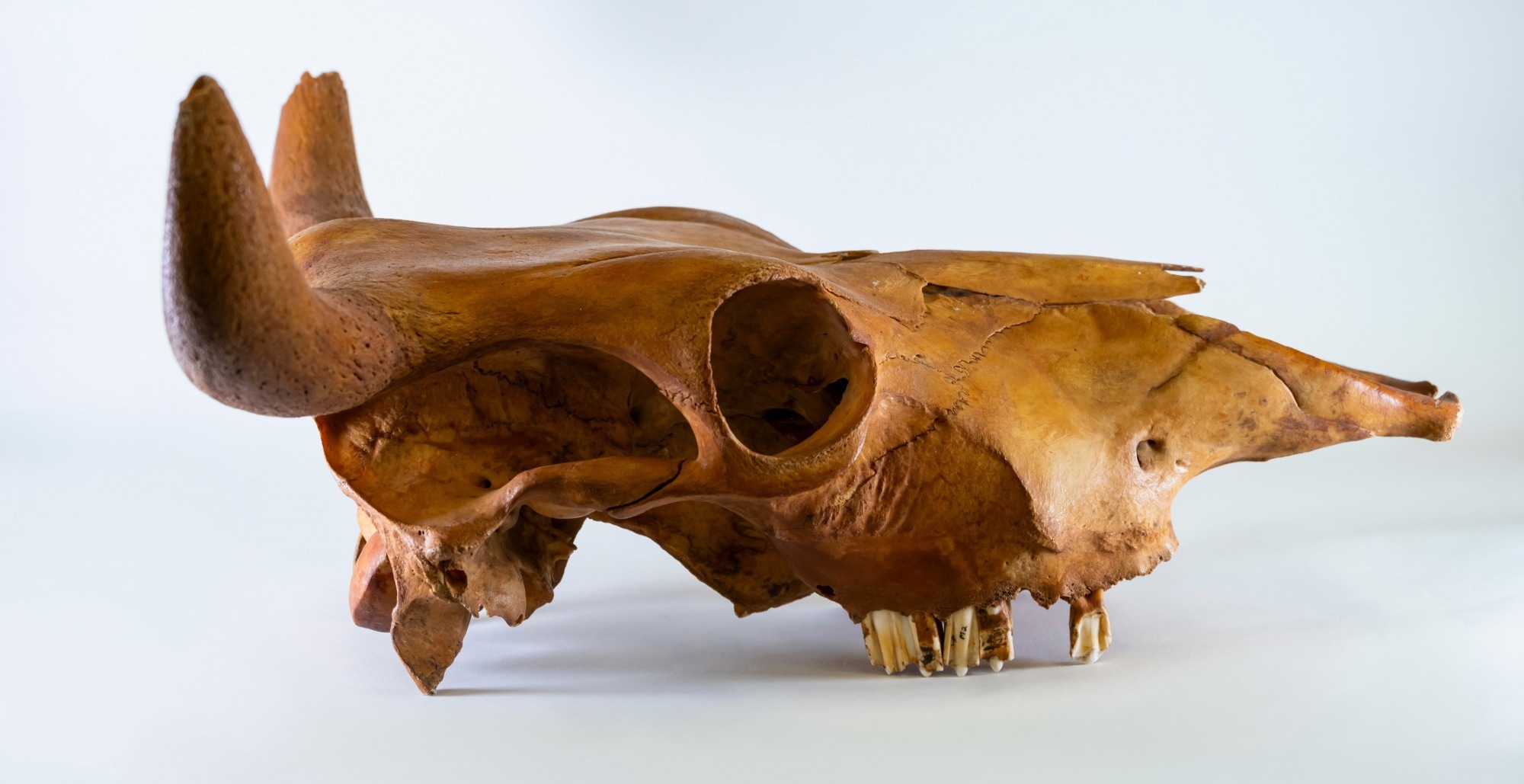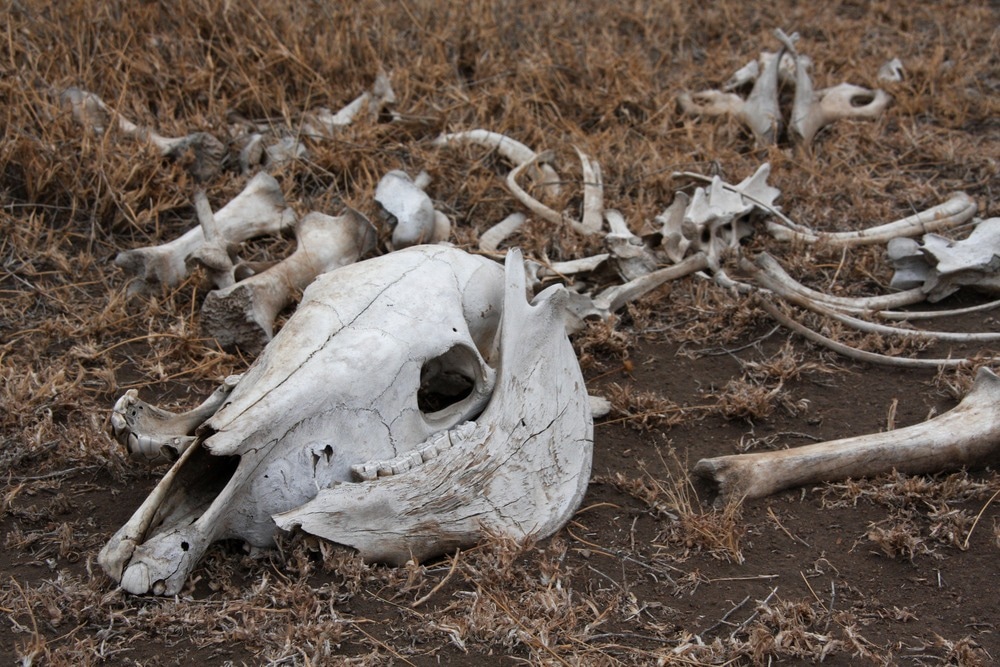Reviewed by Danielle Ellis, B.Sc.Aug 9 2023
Cattle may appear to be a uniquely American animal, steeped in cowboy legend, cattle drives, and sprawling ranches. Cattle, on the other hand, did not exist on the American continent before the arrival of the Spanish, who brought livestock from Europe via the Canary Islands.
 Using ancient DNA, researchers show that African cattle were likely brought to the Americas more than a century before written records document their arrival. Image Credit: Jeff Gage
Using ancient DNA, researchers show that African cattle were likely brought to the Americas more than a century before written records document their arrival. Image Credit: Jeff Gage
Researchers examined ancient DNA from Spanish settlements in the Caribbean and Mexico in a new study. Their findings suggest that cattle were also imported from Africa early in the colonization process, more than 100 years before their arrival was officially recorded.
Portuguese and Spanish colonists kept records that mention breeds from the Andalusian region of Spain but make no mention of transporting cattle from Africa. This omission has led some historians to conclude that the initial colonists were entirely dependent on a small herd of European cattle that had been transported to the Caribbean Islands.
Early studies concluded a few hundred animals were brought over in the early 16th century, which were then bred locally on Hispaniola. From there, the initial population was inferred to have spread across the Americas.”
Nicolas Delsol, Study Lead Author and Postdoctoral Associate, Florida Museum of Natural History
Columbus brought the first cattle to the Caribbean during his second expedition in 1493, where they were used as farm animals and a source of food. These new transplants were so successful that feral livestock became an annoyance on Hispaniola. The Spanish spread cattle throughout the Caribbean, and by 1525, foreign livestock was also being farmed in parts of Central and South America. Meanwhile, the Portuguese introduced related breeds from mainland Europe and the Cape Verde Islands to modern-day Brazil.
However, investigators have reason to believe that the version of events gleaned from historical records was insufficient. Emperor Charles V issued an edict in 1518 that made it legal to transport enslaved people directly from their homelands to the Americas, a practice that began less than three years later. Enslaved Africans would play an important—and often unnoticed—role in the development of cattle ranching over the next several decades.
The earliest ranchers in Mexico were nearly all of African ancestry. We know that people like the Fulani in West Africa formed herder societies in which they lived in what could be described as a symbiosis with cattle. Both these lines of evidence made us think there was a strong possibility that the Spanish brought cattle from the same region as the people they enslaved.”
Nicolas Delsol, Study Lead Author and Postdoctoral Associate, Florida Museum of Natural History
Earlier genetic research appears to support this theory. Modern American cattle DNA bears the signature of their European ancestors, but it also reveals a history of hybridization with African and Asian breeds. However, without archaeological evidence, it is impossible to determine when these events occurred.
The humped zebu from Senegal and the n'dama cattle from Gambia was transported to regions with comparable environments on the other side of the Atlantic in the 1800s, marking the beginning of records of African cattle in the Americas.
Cattle that had been domesticated in southeast Asia for thousands of years were also imported from India starting around the same time and continuing into the 1900s. Breeds like the Senepol from the Virgin Islands and the American Brahman, which is widespread in the tropics, are examples of common breeds that resulted from the hybridization of these cattle.

Image Credit: R raymoonds/Shutterstock.com
Are these records the first instance of cattle being imported from outside of Europe, or are they simply the continuation of a long-standing custom that had been unrecorded up until that point?
Delsol claimed that sequencing ancient DNA from cows and bulls preserved during the colonial era would be the only way to be certain. Researchers had only attempted this once before, using Jamaican bones from the 16th century, but their findings were inconclusive.
Delsol collected 21 bones from various archaeological sites. Seven were discovered in Puerto Real, Hispaniola, a former ranching town founded in 1503 and neglected decades later due to widespread piracy in the region. The remaining specimens are from 17th and 18th-century Central Mexican sites, including settlements and convents stretching from Mexico City to the Yucatán Peninsula.
He extracted DNA from bone material and compared it to the genetic sequences of modern breeds from around the world. Most of the sequences, as anticipated, had a significant link with cattle from Europe, which was particularly true for Puerto Real specimens. Six of the Mexican bones also had sequences found in African cattle but, more importantly, in breeds found in southern Europe.
“To make things difficult, there are cattle in Spain similar to those in Africa due to centuries-long exchanges across the Strait of Gibraltar,” Delsol noted.
However, one tooth discovered in Mexico City stood out from the rest. A short sequence largely unknown outside of Africa was buried in the tooth’s mitochondria. The cow from which it was derived most likely lived in the late 1600s, delaying the introduction of African cattle by more than a century.
When the bones are examined over time, they disclosed a pattern of increasing genetic diversity. The oldest bones from Puerto Real and Xochimilco (a settlement south of Mexico City) are all of European origin, while those from later sites in Mexico appear to be evolved from animals more common in the Iberian Peninsula and Africa.
The findings suggest that Spanish settlers started importing cattle straight from West Africa as early as the early 1600s.
Cattle ranching profoundly shaped the landscape and social systems across the American continents. We’ve known about the diverse genetic ancestry of American cattle for a long time, and now we have a more complete chronology for their introduction.”
Nicolas Delsol, Study Lead Author and Postdoctoral Associate, Florida Museum of Natural History
Source:
Journal reference:
Delsol, N., et al. (2023). Ancient DNA confirms diverse origins of early post-Columbian cattle in the Americas. Scientific Reports. doi.org/10.1038/s41598-023-39518-3.